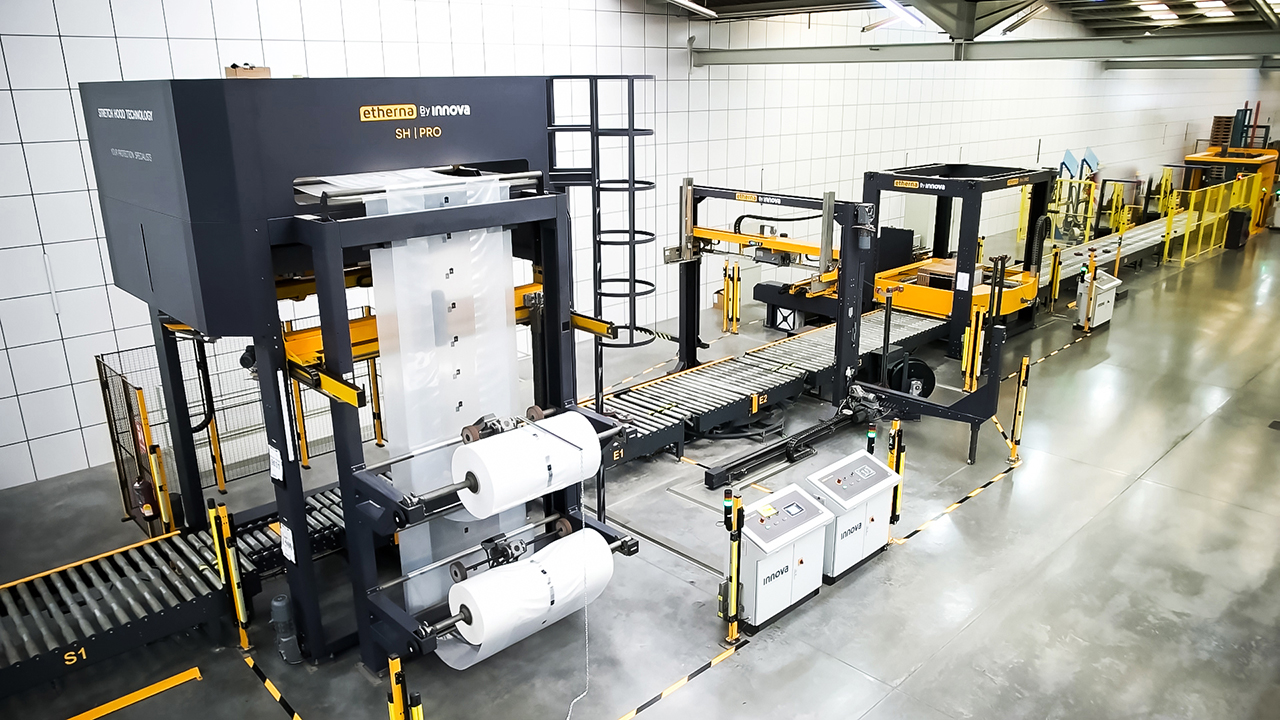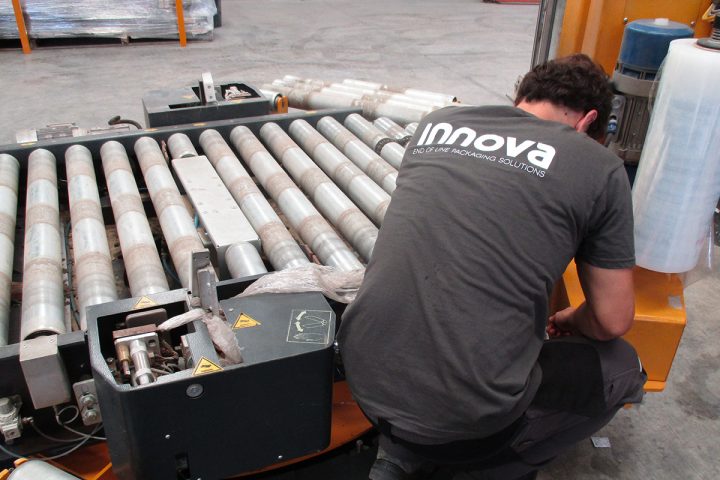The 5 Most Common Mistakes in the Maintenance of an Automatic Packaging System
Maintenance is vital for the proper function of any packaging system. Many problems that happen at the end of the line arise from preventable failures related to maintenance, configuration, or poor operating practices. But what are the most common ones?
In this article, we identify the five most common errors and explain how to detect them, their impact on system performance, and the steps needed to prevent them effectively.
Mistake 1: Incomplete cycles during wrapping, hooding, or strapping procedures
A common mistake in packaging systems is when the automatic cycle is interrupted or stops without properly finishing the film or strap application. Examples include hooding, when the film doesn’t fully cover the pallet, or strapping, when the strap is launched but not sealed correctly.
This type of failure results in incomplete or poorly secured packaging, which not only affects product integrity but also causes rework and frequent stoppages in the packaging cycle. The most common causes are poorly configured parameters, end-of-cycle sensor failures, or obstructions caused by leftover material in the heads.
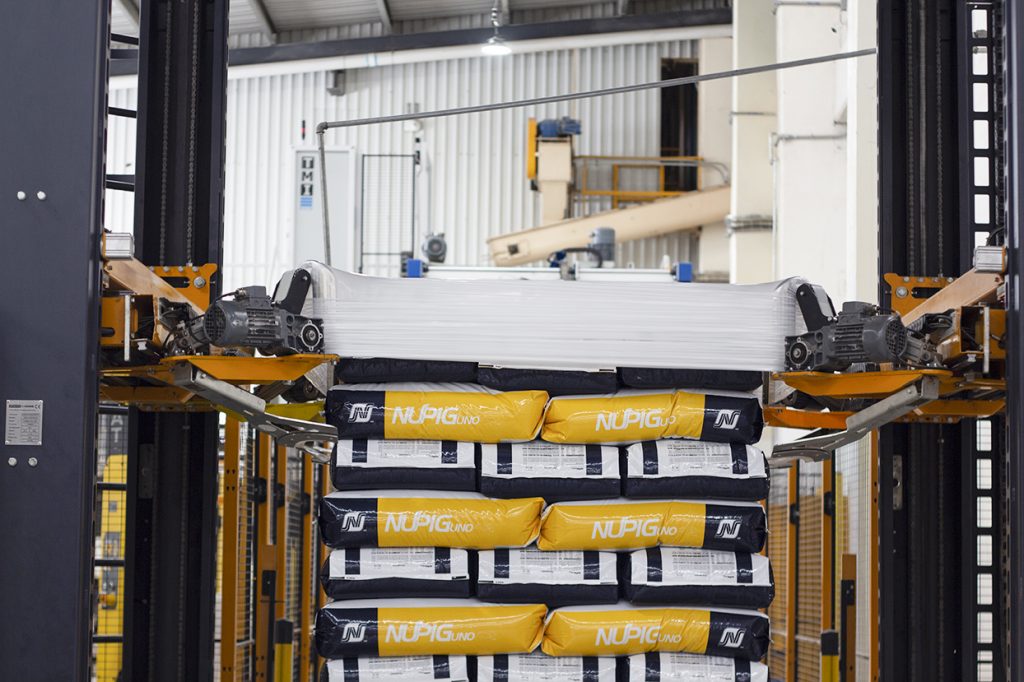
The solution includes periodically inspecting the sensors and regularly cleaning the moving parts involved in the process. It is also important to ensure that the operating parameters are set correctly according to the load type. Our technical service can connect remotely to detect and diagnose faults or malfunctions in the machine.
Mistake 2: Improper tension or compression of the packaging material
Another common issue occurs when the system applies the film or strap with incorrect tension, either too loose or too tight. Tension directly influences the load’s stability and protection during transport or storage. If wrapping or strapping is applied with too little tension, the load becomes unstable, which can lead to tipping or shifting, causing irreparable damage. Conversely, if tension is too high, it can damage fragile products through abrasion or deformation of the load structure.
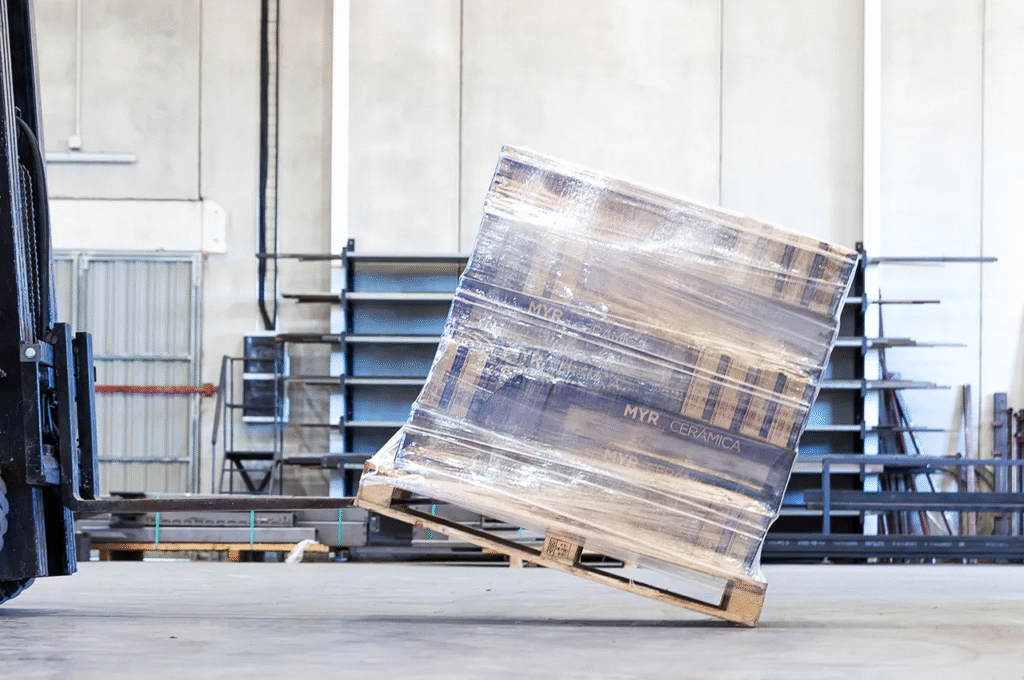
These errors typically occur when standard settings are used for products that need specific adjustments, or when the consumable type is changed without recalibrating the system.
To prevent issues, it’s crucial to adjust the tension settings based on the product used and to perform regular stability tests, especially when changing palletizing formats or consumables. Additionally, when switching the type of consumable, we recommend consulting the manufacturer’s Technical Assistance Service (TAS) to confirm if the new material is compatible with the machine and to determine what adjustments are needed.
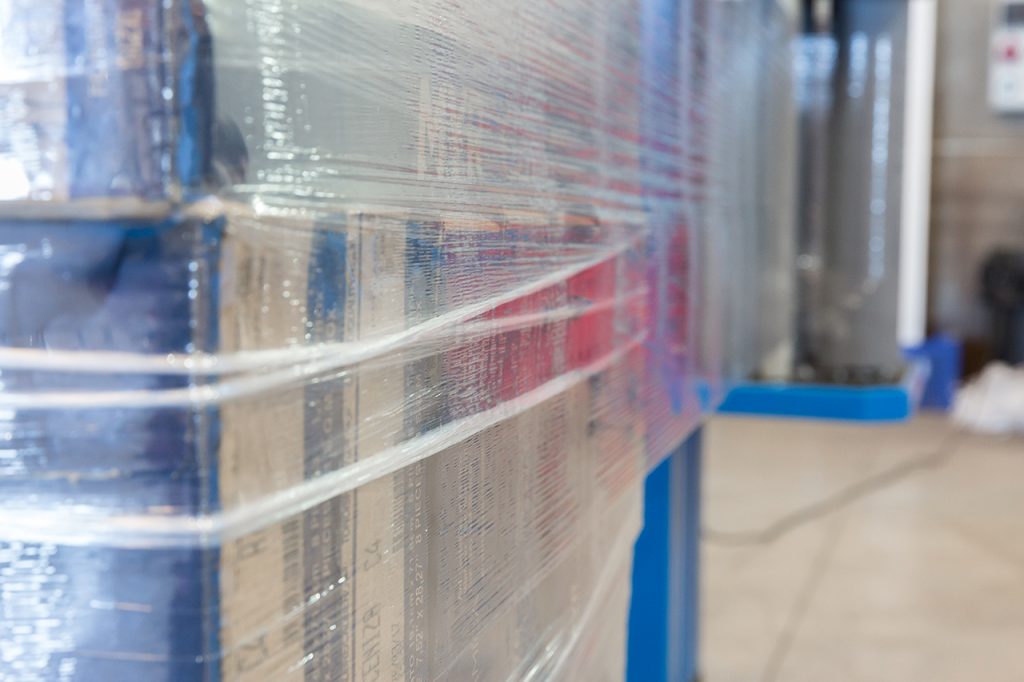
Mistake 3: Mechanical misalignment caused by wear or incorrect positioning
With intensive system use, some mechanical components may become misaligned, affecting the system’s alignment with the pallet. These issues might go unnoticed initially if they are minor, but over time and cycles, they can directly impact the packaging process. For example, in the case of Stretch Hood, misalignment can affect the symmetry of the hooding, causing uneven tension, irregular folds, or a poor fit at the corners. For strapping, misalignment may produce crooked straps, significantly reducing the stability of the pallet.
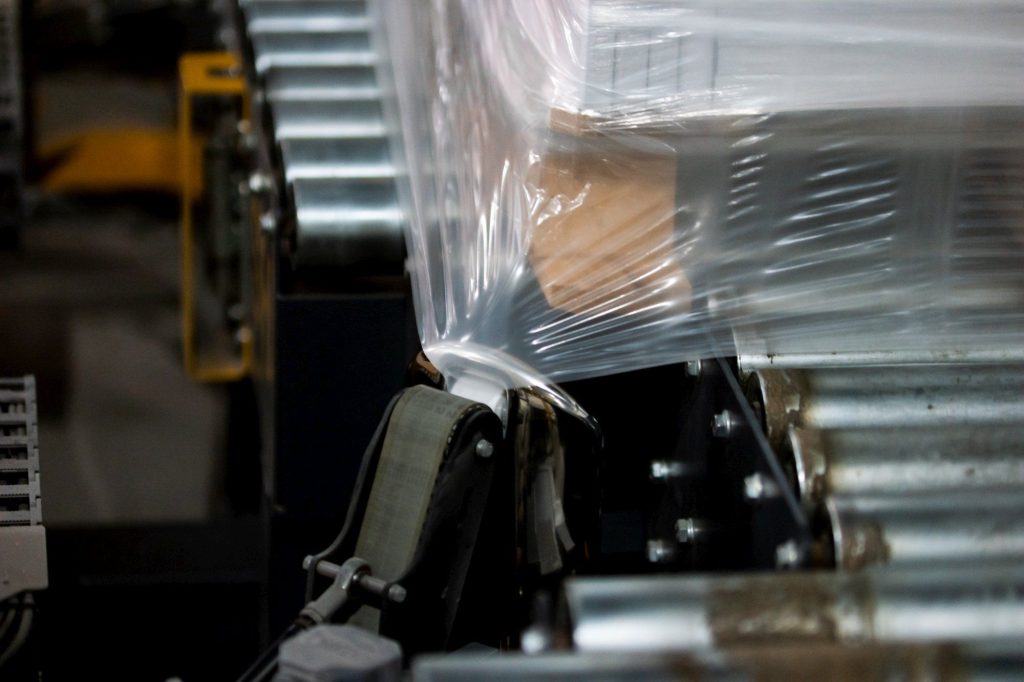
To prevent this type of issue, we recommend performing weekly alignment checks, doing preventive maintenance after a certain number of cycles, and ensuring centering sensors are properly calibrated. This guarantees the system always stays on axis and avoids gradual errors that are difficult to spot visually.
Mistake 4: Buildup of dirt or plastic residue in key areas
One of the key aspects of maintaining a packaging line is regularly cleaning the most sensitive components of the system. How does poor cleaning manifest? In these cases, the system experiences more friction, makes unusual noises, or fails.
The accumulation of consumable residue or dust in sensitive areas can lead to imprecise film or strap cuts, constant stoppages during operation due to jams, and premature wear of components.
The solution to this common issue in many packaging lines is straightforward: implement weekly—or even daily—technical cleaning routines and include them in the scheduled preventive maintenance plan. It is also recommended to apply lubricants to moving parts to minimize friction and wear, as well as to prevent oxidation and corrosion. Spending time on these tasks greatly reduces unplanned downtimes and prolongs the lifespan of the packaging systems.
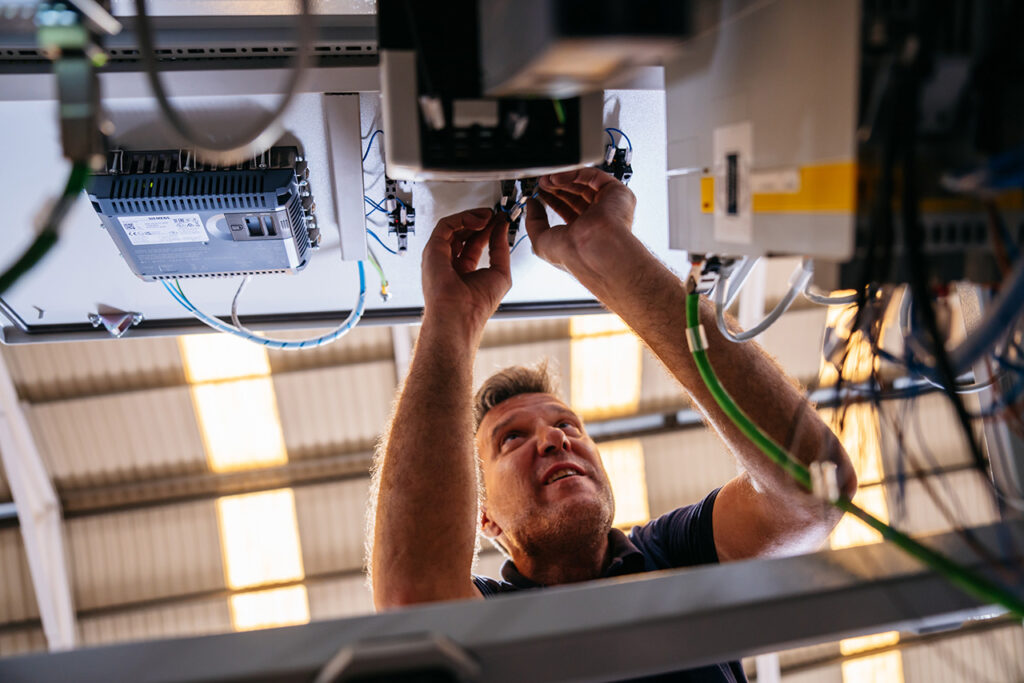
Mistake 5: Insufficient training or upskilling for plant personnel
Finally, one of the most significant errors is the lack of technical training for personnel operating the packaging systems. An operator who doesn’t know how to diagnose an error, interpret an alarm, or use the HMI panel correctly may repeat operational mistakes, make improper parameter adjustments, or even cause mechanical damage through incorrect machine use.
Providing technical training to operators after each new installation or software update by the TAS is crucial. A well-trained team makes fewer mistakes, needs less external support, and helps create a more stable and efficient production. At Innova, we deliver this kind of technical training during the commissioning of an end-of-line system.
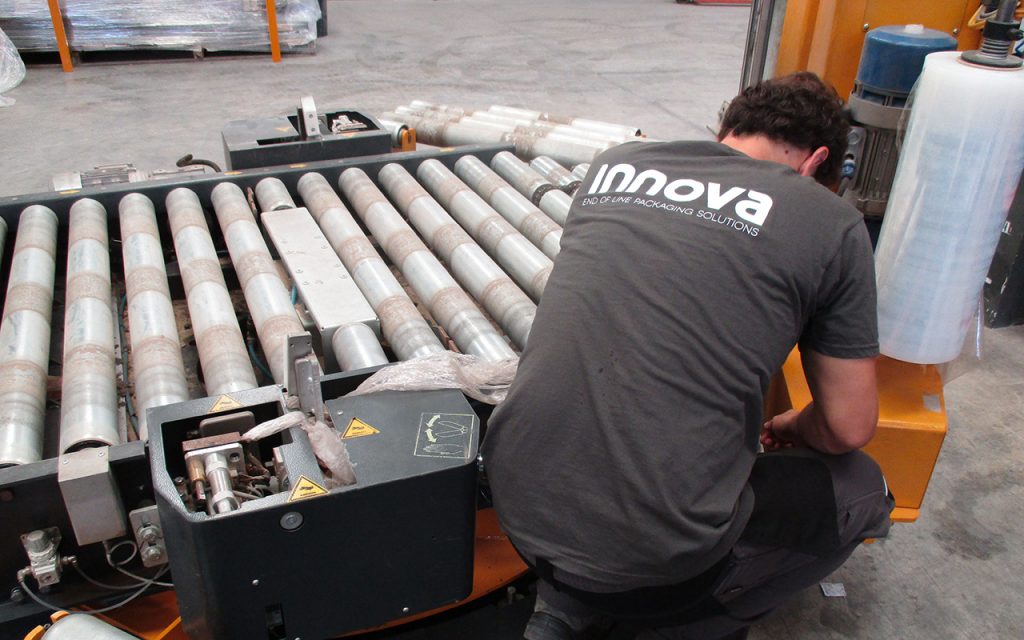
In short, identifying these five errors early is crucial for preventing unplanned downtimes, minimizing issues, and extending the lifespan of your packaging systems. It’s essential always to consult the manufacturer and schedule regular preventive maintenance.
At Innova, we support our clients through every stage of the process, including commissioning, personnel training, and regular maintenance, to ensure each packaging line operates at full capacity. Contact our technical team to learn more about how we can help enhance the efficiency of your end-of-line.

